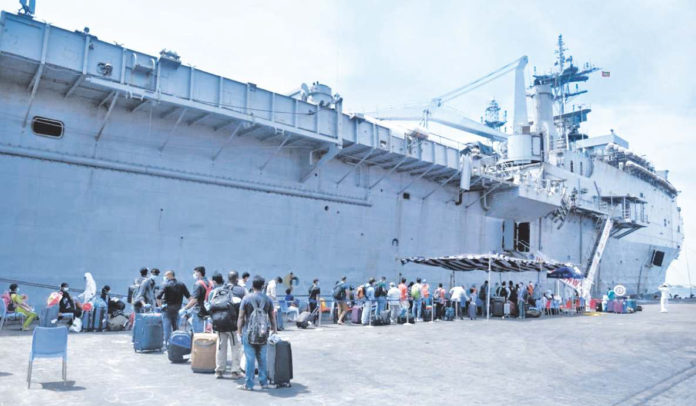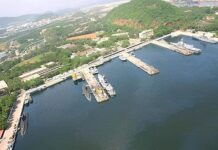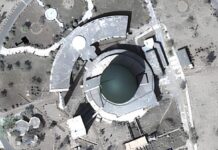The government announced plans to bring back 1,97,000 Indian citizens stranded on account of the lockdowns due to the Covid-19 pandemic abroad, starting 7 May through special Air India flights and Indian Navy ships. 64 flights and three naval sailings were announced to be operated until 13 May, as part of Phase I of an evacuation plan, named “Vande Bharat” mission. Of the 64 flights, 15 were for Kerala, 11 each for Delhi and Tamil Nadu, seven each to Maharashtra and Telangana, and the others to Punjab, Gujarat, Jammu and Kashmir, Karnataka and Uttar Pradesh. Air fare and sea fare was charged to the passengers.
This is the largest exercise since national airline Air India flew back 1,70,000 during the first Gulf War from Kuwait during the Persian Gulf War. It was followed by the evacuation of 1764 Indians from Lebanon in 2006 and more than 5600 Indians from Yemen during the civil war that raged there in 2015.
An operation of this magnitude was also the most comprehensive evacuation ever attempted and at a difficult operating time when an unpredictable, dangerous and invisible enemy like the coronavirus was lurking everywhere.
India banned all flights in late March as it imposed one of the world’s strictest lockdowns to check Covid-19 cases, leaving thousands of workers and students stranded. Till now, the government had resisted evacuations, given the logistical and safety nightmare of bringing back and quarantining returning citizens.
Detailed instructions were issued by the government on the categories of people who were to be given precedence, medical screening of passengers, the procedure on reaching the destination, protocols, the infrastructure to be put in place.
Evacuation by Air
National carrier Air India and its subsidiary Air India Express ran special ferry flights from New Delhi, Kochi and Kozhikode to Singapore, Abu Dhabi and Dubai respectively. The two airlines operated 64 flights in seven days to bring back 14,800 stranded Indians from 12 countries.
Three decades ago, Air India led a group of airlines which included Indian Airlines and Aeroflot as well as IAF to rescue an estimated 111,711 Indians from the Gulf, after Iraq invaded Kuwait in the year 1990. The 59-day operation involved 488 flights and was conducted before the first Gulf war. This time, the exercise encompassed flights to the US in the West to Philippines in the East.
The Indian Air Force prepared about 30 aircraft, including C-17 Globemaster and C-130J Super Hercules for the mission.
Role of the Indian Navy
The Indian Navy said, on 5 May, that it had launched Operation Samudra Setu (sea bridge), as part of the national effort to repatriate Indian citizens from overseas. Indian Naval Ship (INS) Jalashwa and INS Magar were sent to Malè, Maldives to commence evacuation operations from May 8 as part of Phase-1.
The Indian Navy had previously carried out evacuation efforts in conflict-hit areas like Lebanon (2006) and Yemen (2015). However, a potential operation in the Gulf will not only be larger in scale, but it would have to keep in mind social distancing norms.
INS Jalaswa. The ships were suitably provisioned for the evacuation operation. INS Jalashwa is the Navy’s Landing Platform Dock (LPD) and has a capacity to generate 60,000 gallons (212 tonnes) of fresh water a day, around 3MW of electrical power and has extensive medical facilities. Weighing over 16,400 tonnes, it is also the second-largest combat warship in the Indian Navy after the aircraft carrier INS Vikramaditya. It is capable of carrying tanks and can carry up to 1,000 soldiers. Since her commissioning in 2007, INS Jalashwa has proved to be indispensable and an extremely valuable acquisition for the navy. The ship has played major roles in amphibious operations, strategic sealift and humanitarian assistance and disaster relief (HADR) missions. The Navy suitably modified INS Jalashwa by removing non-essential equipment in order to accommodate evacuees. The ship was provided relief and coronavirus protection material as well as medical and administrative support staff. It set sail from Male to Kochi on 8 May with 750 persons.
INS Magar. INS Magar, also an amphibious ship, can carry armoured personnel carriers for transportation and tanks to target beaches. The Magar-class ships weigh about 5,500 tonnes. The ship can also carry 500 fully laden troops for nearly 10 days, in addition to her own crew. The ship was zoned to prevent intermingling of the crew with the evacuees.
INS Airavat and INS Shardul also headed to the United Arab Emirates (UAE) for evacuation and were in addition to the civilian aircraft sent.


















